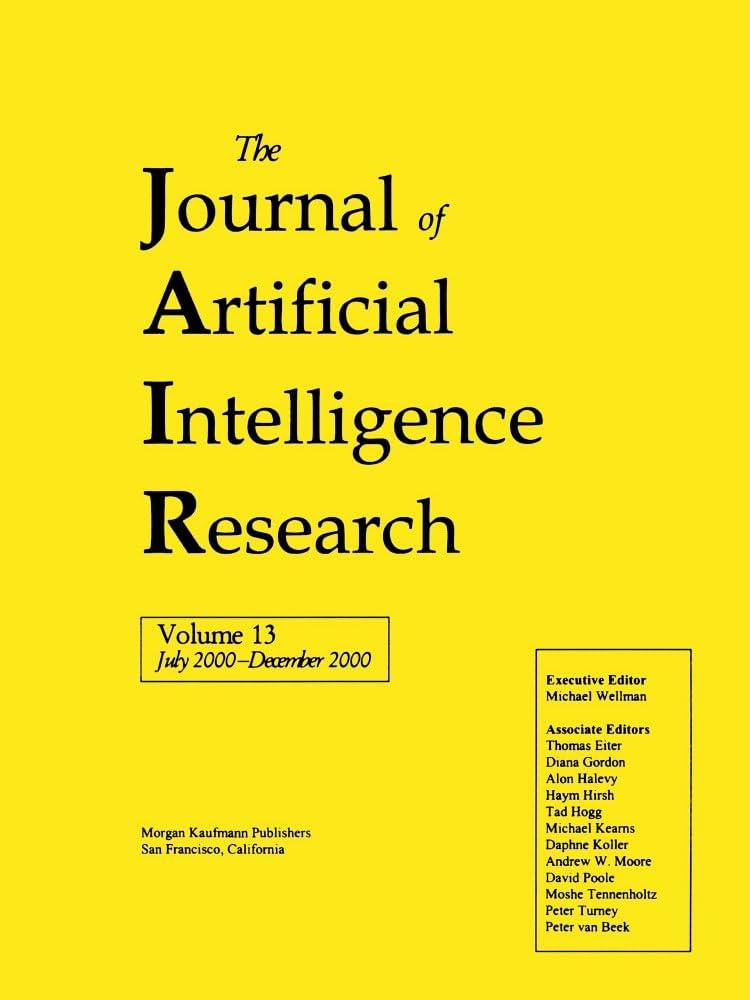Qualitative Reasoning about 2D Cardinal Directions using Answer Set Programming
IF 4.5
3区 计算机科学
Q2 COMPUTER SCIENCE, ARTIFICIAL INTELLIGENCE
引用次数: 0
Abstract
We introduce a formal framework (called NCDC-ASP) for representing and reasoning about cardinal directions between extended spatial objects on a plane, using Answer Set Programming (ASP). NCDC-ASP preserves the meaning of cardinal directional relations as in Cardinal Directional Calculus (CDC), and provides solutions to all consistency checking problems in CDC under various conditions (i.e., for a complete/incomplete set of basic/disjunctive CDC constraints over connected/disconnected spatial objects). In particular, NCDC-ASP models a discretized version of the consistency checking problem in ASP, over a finite grid (rather than a plane), where we provide new lower bounds on the grid size to guarantee that it correctly characterizes solutions for the consistency checking in CDC. In addition, NCDC-ASP has the following two novelties important for applications. NCDC-ASP introduces default CDC constraints to represent and reason about background or commonsense knowledge that involves default qualitative directional relations (e.g., "the ice cream truck is by default to the north of the playground" or "the keyboard is normally placed in front of the monitor"). NCDC-ASP introduces inferred CDC constraints to allow inference of missing CDC relations and to provide them as explanations. We illustrate the uses and usefulness of NCDC-ASP with interesting scenarios from the real-world. We design and develop a variety of benchmark instances, and comprehensively evaluate NCDC-ASP from the perspectives of computational efficiency.利用答案集规划的二维基本方向定性推理
我们引入了一个正式的框架(称为NCDC-ASP)来表示和推理平面上扩展空间对象之间的基本方向,使用答案集编程(ASP)。NCDC-ASP保留了基数方向微积分(CDC)中基数方向关系的含义,并提供了各种条件下CDC中所有一致性检查问题的解决方案(即在连通/不连通空间对象上的基本/析取CDC约束的完整/不完整集合)。特别是,NCDC-ASP在有限网格(而不是平面)上对ASP中一致性检查问题的离散化版本进行了建模,其中我们提供了网格大小的新下界,以保证它正确表征了CDC中一致性检查的解。此外,NCDC-ASP还具有以下两个重要的应用新颖性。NCDC-ASP引入了默认的CDC约束来表示和推理涉及默认定性方向关系的背景或常识(例如,“冰淇淋卡车默认位于操场的北部”或“键盘通常位于显示器的前面”)。NCDC-ASP引入了推断的CDC约束,以允许对缺失的CDC关系进行推断并提供它们作为解释。我们用来自现实世界的有趣场景来说明NCDC-ASP的使用和有用性。我们设计并开发了多种基准实例,并从计算效率的角度对NCDC-ASP进行了综合评估。
本文章由计算机程序翻译,如有差异,请以英文原文为准。
求助全文
约1分钟内获得全文
求助全文
来源期刊

Journal of Artificial Intelligence Research
工程技术-计算机:人工智能
CiteScore
9.60
自引率
4.00%
发文量
98
审稿时长
4 months
期刊介绍:
JAIR(ISSN 1076 - 9757) covers all areas of artificial intelligence (AI), publishing refereed research articles, survey articles, and technical notes. Established in 1993 as one of the first electronic scientific journals, JAIR is indexed by INSPEC, Science Citation Index, and MathSciNet. JAIR reviews papers within approximately three months of submission and publishes accepted articles on the internet immediately upon receiving the final versions. JAIR articles are published for free distribution on the internet by the AI Access Foundation, and for purchase in bound volumes by AAAI Press.
 求助内容:
求助内容: 应助结果提醒方式:
应助结果提醒方式:


